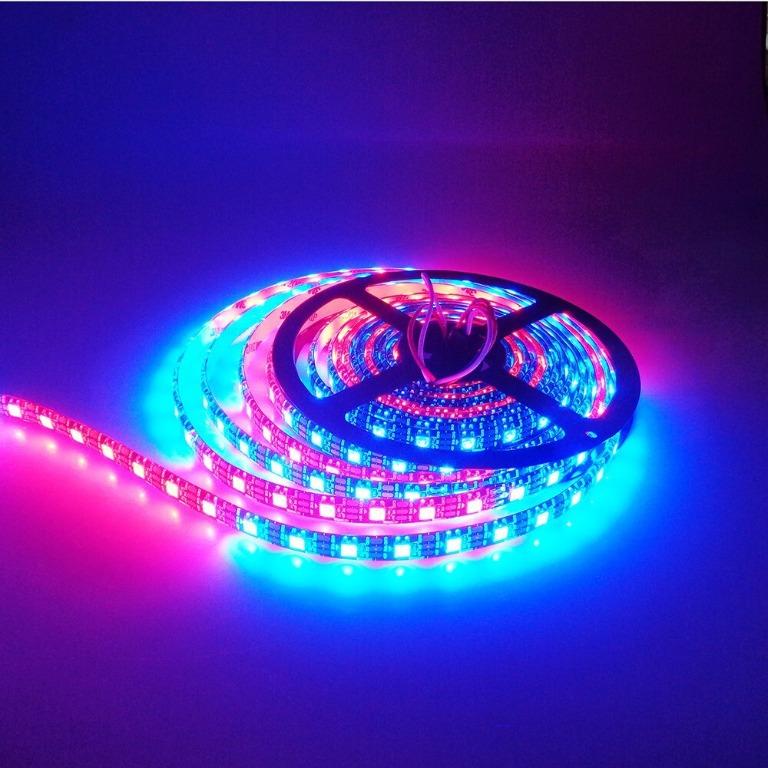If you're working with a 12V circuit, you'll need to carefully consider the size of the wire you use. 12V circuits are low-voltage, commonly found in batteries and require larger wire sizes to handle higher amounts of electric power. But how do you determine the right wire size for your 12V circuit?
Calculating the Needed Wire Size
Let's say you want to connect a 200W device to a 12V battery. To find the appropriate wire size, you first need to calculate the amps required. In this case, 200W divided by 12V equals 16.67A. However, you also need to account for the 80% NEC (National Electric Code) rule, which means the wire should have a minimum ampacity of 13.34A. In this scenario, an 18 AWG wire size with a 14A ampacity would be suitable.
Read more: Cutting, connecting and installing LED strips
But what if the battery is located a distance away from the device? In such cases, you'll need to consider voltage drop, which can significantly impact the amps required. This means you may need a larger wire size with higher ampacity. Depending on the distance, you might need a 14 AWG wire (20A), 12 AWG wire (25A), or even a 10 AWG wire (35A).

Choosing the right wire size is crucial, as using a wire with insufficient ampacity can lead to fires. To avoid any mistakes in selecting the 12V cable size, you can rely on two key resources:
-
12V Cable Size Calculator: This tool estimates the minimum ampacity a wire should have based on the total wattage of the device you want to run on a 12V circuit. It also takes into account the 80% NEC rule.
-
12V Wire Size Chart: This chart provides guidance on choosing the appropriate 12V wire size when dealing with distances ranging from 15 feet to 90 feet.

Both the calculator and the chart are valuable resources for accurately determining the wire size you need for your 12V circuit. However, let's first explore the 12V cable size calculator before delving into the all-encompassing 12V wire size chart.
How to Calculate the Needed 12V Wire Size (Theoretically)
Calculating the theoretical wire size for a 12V circuit involves two steps:
-
Calculate the amps based on wattage: Divide the max wattage by 12 volts to determine the amps. For instance, a 150W device would require 12.5 Amps (150W / 12V = 12.5A).
-
Apply the 80% NEC rule: Multiply the calculated amps by 1.25 to ensure the wire's ampacity can handle the electrical load safely. In our example, the result is 15.63A (12.5A × 1.25).
Based on this calculation, you'll need a wire size with an ampacity of 15.63A or higher. By consulting the AWG wire size chart, you can choose the correct wire size that meets your needs.
According to the chart, an 18 AWG wire has an ampacity of 14A, which is insufficient for our scenario. Instead, a 16 AWG wire with a 17A ampacity would be suitable.
To simplify this process, we've created a calculator that automates these calculations, including the 80% NEC rule.
Read more: How much do Christmas lights add to your energy bill?
12V Cable Size Calculator (At 0 Feet Distance)
Our calculator allows you to input the maximum wattage of the device you want to run with a 12V battery. It then calculates the minimum ampacity the wire should have for the circuit. For example, let's take a 150W 12V device. By adjusting the wattage slider to '150,' the calculated minimum required ampacity is determined: 15.63A.
Based on this result, you can select the appropriate wire size for your 12V circuit by referring to the AWG wire size chart.
Read more: Do Smart Lights Require Switches To Operate?
Accounting for Voltage Drop (12V Wire Sizes Used in Practice)
In practice, you'll need larger (thicker) wires due to voltage drop. As electricity travels through a wire, the voltage can decrease significantly over longer distances. For a 12V system, the voltage drop should not exceed 3% per foot of wire length.
To compensate for voltage drop while maintaining the required wattage, you'll need to increase the amps. The circuit will automatically increase the amps when it detects a voltage drop. In turn, you must recognize that your circuit requires more amps.
For example, if you theoretically calculate that your 12V device requires 15A of current (and account for the 80% NEC rule), a 14 AWG wire with a 20A ampacity would suffice. However, if you have a 25 ft long wire, which reduces the voltage to, let's say, 8V, you will now require 22.5 amps to deliver the same amount of power. In this case, a 14 AWG wire would not be sufficient, and you would need a 10 AWG wire with a 35A ampacity.
While voltage drop calculations are complex, electricians rely on the 12V wire size chart for practical use.

By referring to this chart, you can determine the appropriate wire gauge for a 12V circuit, considering the required amps and distance. The chart clearly shows that a 300W device at a distance of 30 feet would necessitate a 6 AWG wire with a 65A ampacity. This demonstrates the significant impact of voltage drop on 12V circuits.
If you're unsure about the 12V wire size, it's always safer to choose a thicker wire. Thicker wires have higher ampacity and are less likely to catch fire than thinner ones.
Hopefully, this guide has cleared up any confusion regarding 12V wire sizes. If you need further assistance, feel free to leave a comment below, and we'll be happy to help.
Thank you.

